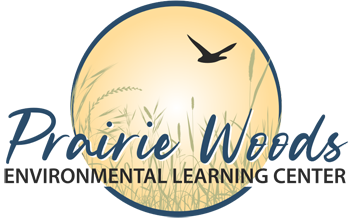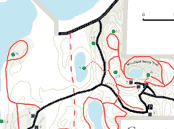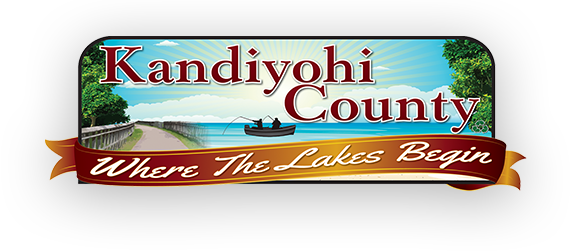WHO WE ARE
What is Prairie Woods?
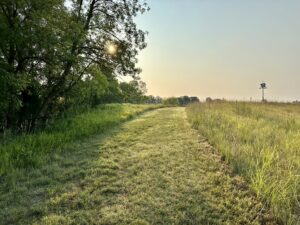
Located in the heart of northern Kandiyohi County, Prairie Woods Environmental Learning Center spans a magnificent 560 acres of diverse terrain, serving as a hub for environmental education and outdoor discovery. As a 501(c)(3) nonprofit, we are closely connected to our local community and proudly offer our educational and recreational programs to groups throughout Minnesota. We cater to groups through reservation-based, tailored programs and invite walk-in visitors to explore our scenic trails all year round.
At Prairie Woods, our landscape is adorned with the beauty of rolling glacial formations, native prairie, lush woodlands, lively wetlands, and pristine shorelines, establishing us as a top outdoor destination for more than thirty years. With 11 miles of natural surface trails designed for hiking, biking, skiing, and more, we invite people of all ages to connect with nature.
Prairie Woods' site Includes
- An education building with five classrooms, a trailhead, and a 30-foot indoor climbing wall.
- A large 3-season pavilion.
- A shooting sports range.
- The Gary Westby Observatory building.
- Several beautiful spaces are available for meetings, family reunions, holiday gatherings, and weddings.
Our mission
To promote awareness of the importance of our natural environment through education and outdoor recreation.
Our Vision
A world where people respect the environment and understand its importance to their well-being and our shared future.
History of Prairie Woods

Prairie Woods Environmental Learning Center is nestled in the historically and culturally significant lands recognized as the traditional homeland of the Dakota Peoples. This land, with a history that spans over 12,000 years, was sculpted into its present landscape by the retreat of ancient glaciers, revealing striking ridges and wetlands. For thousands of years, Native American communities have lived in harmony with this land’s varied ecosystems, including forests, prairies, and wetlands, nurturing a legacy of environmental stewardship and a profound connection to nature.
The year 1871 marked a new chapter for this land when the Danielson family, Swedish immigrants, started farming here. The Danielson family cultivated the area until the late 1980s, after which the land was transitioned to Kandiyohi County. This transition paved the way for the founding of Prairie Woods Environmental Learning Center in 1992, aiming to foster a deeper understanding and appreciation of the natural world.
Preserving a connection to its historical roots, the original farmstead—with its historic barn and centuries-old majestic bur oak trees—remains a key feature of our center. Additionally, a restored log cabin commemorates the Danielson family’s first home on this land.
At Prairie Woods Environmental Learning Center, we honor the layers of history that have shaped this land, from its ancient roots as a vital part of Indigenous peoples’ homelands to its more recent agricultural heritage. We are committed to education and respect for the deep connections between these lands and the peoples who have lived and continue to live here, fostering a spirit of respect, learning, and stewardship for all who visit.
Conservation Efforts
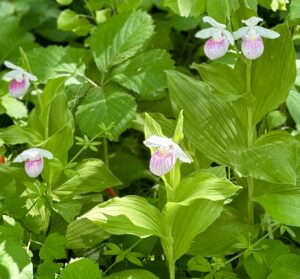
Prairie Woods Environmental Learning Center, located in the distinctive Prairie Pothole Region of Minnesota, is a testament to the power of conservation. Our center stands amidst a landscape sculpted by the retreat of ancient glaciers, offering a glimpse into a world where the Northern Tallgrass Prairie once flourished, peppered with more than 70 wetlands per square mile. Today, we are guardians of some of the last sanctuaries of these critical ecosystems, which have seen a staggering 99% decline in prairie coverage and over 90% loss of wetlands.
Our position within the Glacial Morain Complex unveils the unique “kame and kettle” topography—characterized by glacial hills, depressions, and elongated deposits. A highlight is a significant kame that provides stunning views across Lake Florida, safeguarding an expanse of native prairie, a burial mound, and a diverse array of over 100 native plant species. This includes the vibrant showy lady’s slipper, the early-blooming pasque flower, and serves as a sanctuary for the regal fritillary butterflies, now being considered for endangered status. At Prairie Woods, the prairie melds into the Eastern Broadleaf Forest, enhancing our ecological diversity with rare habitats such as the threatened oak savanna.
We also take pride in our efforts to protect the last undeveloped shoreline of Lake Florida, underscoring our commitment to conserving natural heritage for future generations. Our wetlands are a haven for a rich variety of bird species, contributing to the vibrant tapestry of life at Prairie Woods.
As we move forward, Prairie Woods is dedicated to evolving and broadening our impact, meeting the changing needs of our visitors and the wider community, and nurturing a profound respect for the natural environment.
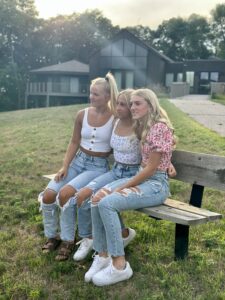
By joining Prairie Woods, you become part of a community dedicated to preserving the beauty and diversity of our natural world. Your membership supports our mission to connect people to nature, ensuring the wonders of Prairie Woods can be enjoyed for generations to come.
